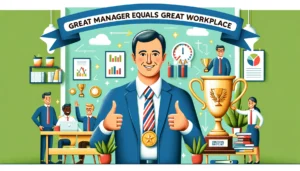Bridging the HR-to-CEO Gap for a workplace of tomorrow
- 5 Min Read
HR software provider Personio reveals why nurturing relationships between HR professionals and executives is the secret to a successful business
- Author: Helen Dugdale
- Date published: Sep 19, 2023
- Categories

The Human Resources (HR) division is the beating heart of any business. The last few years have brought many challenges for HR professionals, no more than the gap that has arisen between the HR team and the CEO. This breakdown in communications can hinder organizational success and the ability to adapt to emerging issues.
For businesses to become future-ready workplaces, they face an abundance of challenges driven by technology advancements and changing employee expectations. By closing the HR-to-CEO gap, organizations can smoothly navigate these transformations.
As Ruth Thomas, Director of People and Organisational Management at Personio (the all-in-one HR software) explains, it has never been more essential to strengthen this crucial relationship. “People are an organization’s most important asset and the effectiveness of your people strategy and experience will make or break your organization. It’s crucial that the champion of that people strategy and experience has a strong relationship with the executive team. They need to understand where the organization is aspiring to be and their role in making that happen.”
Understanding the HR-to-CEO gap
The gap between senior management and the HR department can arise in many ways, from a siloed people strategy that is disconnected from company objectives to a mismatch in perception of current priorities between executives and the HR team.
“Recently, I have observed HR leaders referencing the pace of change and organizational structures or decision-making processes as key contributors to this gap. When things are moving so quickly, we need simple ways to stay connected and aligned on priorities, which is easier said than done,” admits Thomas.
Effective dialogue from CEOs is essential to help HR professionals understand the strategic objectives of the organization and position their initiatives. This alignment is becoming even more essential when it comes to creating the workplace of tomorrow. With the rapid changes in technology, demographics of the workforce and expectations shaping the future, clear lines of communication between the boardroom and HR teams are needed. Then businesses will confidently embrace the changes, including increased productivity, employee satisfaction and competitive advantage.
Strategies for bridging the gap
Nurturing this crucial partnership allows HR professionals to gain a deeper understanding of the organization’s strategic objectives, see the business as a whole entity and arm the team with the right data to establish a strong working relationship with management.
“We all know that your people strategy is one of the most important drivers of organizational success. As a HR professional, your business is your customer and success is enabling them to achieve their goals. Connecting efforts back to company goals allows you to quantify the impact of your team in a way that has the most meaning to your customers, but also ensure you are focusing on the highest impact topics,” continues Thomas.
Nurturing effective communication
As the all-seeing eye across the business, HR departments know each employee and are aware of people-centred issues across departments. It is vital that lines of communication between HR professionals and senior management teams are transparent. This enables HR teams to present challenges and data-driven insights to those in the boardroom to support decision-making. Strategies like regular meetings, clear reporting structures and data-driven discussions cement stronger relationships.
“One function of a HR professional is to act as an advisor to the CEO, sharing themes and insights across all levels of the organization and gathering external input from across the industry. This will ensure company decisions are data-driven and reflect the reality of the organization. HR leaders are one of the few trusted sparring partners a CEO will have and with that, have the opportunity to shape company decisions and ensure the people team’s perspective has been prioritized,” advises Thomas.
Leveraging technology and data
Developments in technology play a crucial role in transforming HR practices. Clever use of data analytics can inform HR strategies and demonstrate their value to CEOs.
As Thomas explains, the speed at which technology is developing shows the need for increased agility in businesses and shines a light on the role the people team play in steering the organization.
“Leveraging data levels in the playing field highlights a very tangible impact of HR. It is a great way to demonstrate the connection between HR efforts and business outcomes, such as onboarding satisfaction and productivity. Being able to draw connections and quantify perception can make something that would otherwise seem lofty quite tangible.”
Developing HR leadership skills
HR teams that enjoy close working relationships with management can provide insights into talent and recruitment strategies and employee development. This partnership creates an environment where HR strategies can be integrated into the overall business strategy, resulting in improved performance.
Thomas reveals how HR teams can maintain strong working relationships with CEOs. “Investing in this relationship doesn’t need to be complicated. Don’t skip the human aspect, get to know them as a person. Once you have that personal connection, spending time aligning on the most crucial intersections of your work and defining ways of working that can be revisited as your company and teams evolve is key. Relationships require investment, prioritize two-way learning as you both grow in your roles.”









